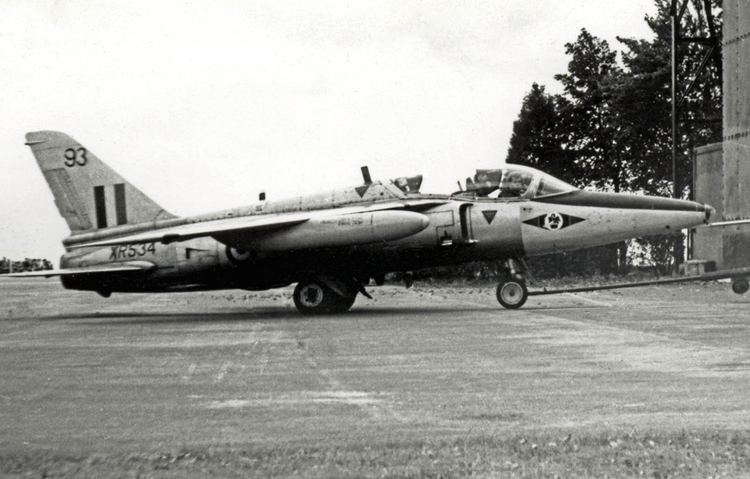Active 12 May 1912 – present Role RAF flying training | Country United Kingdom Type Training Size 100 personnel | |
 | ||
The Central Flying School (CFS) is the Royal Air Force's primary institution for the training of military flying instructors. Established in 1912 it is the longest existing flying training school.
Contents
History
It was established at Upavon Aerodrome, near Upavon, Wiltshire on 12 May 1912. It was later based at RAF Little Rissington, from 1946 to 1976. The CFS's first commandant was Captain Godfrey Paine RN. It has been responsible for instructor training since 1920, with pilot training being delegated to the Flying Training Schools.
When the Red Arrows, the RAF's sole aerobatic team was formed by amalgamation of other teams, the responsibility was transferred to the CFS from Fighter Command. The Red Arrows moved to RAF Scampton in 1983 when the CFS was moved there and out in 1995– though the Red Arrows returned in 2000.
Elementary flying training
The section started using de Havilland Chipmunk T.10 and Scottish Aviation Bulldog T.1.
In 2000 the Grob Tutor T.1 replaced the Scottish Aviation Bulldog as the initial trainer operated by the unit.
Fast jet training
During the 1950s the CFS was equipped with the Gloster Meteor. During 1976 the Hawker Siddeley Gnat T.1s were based at RAF Valley however during 1977 these were replaced as the CFS main advanced jet trainer by the Hawker Siddeley Hawk T.1.
From 1993 the Short Tucano took the place of the BAC Jet Provost.
Helicopter training
Helicopter instruction began in 1955 on the Westland Dragonfly and Bristol Sycamore at RAF South Cerney in Gloucestershire. It moved to RAF Ternhill in August 1961. From 1966, the Westland-built Sioux helicopter began service, lasting until 1973, when replaced with the Westland Gazelle HT.2s, much more reminiscent of modern-day helicopters. During the 1970s the Westland Whirlwind HAR.10s were also used and the School had a detachment at RAF Valley, Anglesey, Wales for SAR and mountain rescue training.
In 1997 the Gazelle HT.2's and HT.3's were replaced by the Squirrel (Eurocopter AS350), and the Griffin (Bell 412) is also used. RAF Shawbury has been the home of the helicopter training school since 1977, becoming the Defence Helicopter Flying School in 1997. A satellite unit of the CFS is maintained at RAF Shawbury to train and develop helicopter instructors.
Current Training Squadrons
All UK military aircrew start their flying careers with elementary flying training:
Following EFT, aircrew students are streamed to either fast jet, rotary-wing or multi-engine pipelines.
Fast Jet
Following Fast Jet training, successful students go on to the Typhoon or Tornado GR4.
Multi Engine
Multi Engine students will go on to fly the C-17, Atlas, Hercules or Voyager transport aircraft or ISTAR assets like the Shadow, Sentry, Sentinel or Rivet Joint.
Rotary Wing
Defence Helicopter Flying School
Rotary wing students stream onto the Chinook or the Puma HC.2.
Future System
Under the new UK Military Flying Training System, provided by Ascent Flight Training, a consortium of Lockheed Martin and Babcock International, new aircraft will be procured for the pipeline:
Training
Suitable pilots are trained as Qualified Flying Instructor (QFIs) on the Grob Tutor and the Beechcraft King Air at RAF College Cranwell. Tucano QFIs are trained by CFS personnel at RAF Linton-on-Ouse and Hawk QFIs are trained by similar personnel at RAF Valley. Helicopter instructors, both pilots and rearcrew, are trained at RAF Shawbury, home of the Defence Helicopter Flying School.
Flying instructors are awarded the Qualified Flying Instructor qualification for fixed-wing types. Helicopter instructors are referred to as Qualified Helicopter Instructors (QHI) or Qualified Helicopter Crewman Instructors (QHCI).
Commandants
Ranks given are the highest rank the officer in command held during his tenure.
1912 to 1919
1919 to 1920 (as Commandant, Flying Instructors' School)
1920 to 1944
1946 to present
Assistant Commandants
